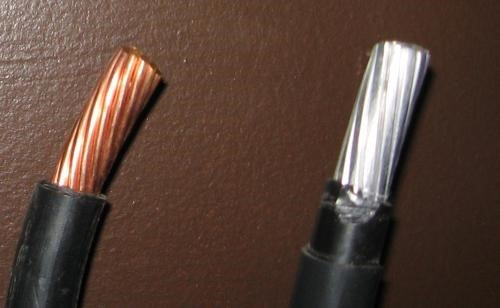Chapter:
the advantages and disadvantages of aluminium as compared to copper as a conductor of electricity

Advantages of aluminium as compared copper as a
conductor of electricity: The electrical
conductivity of aluminium is next to that of copper. Its resistivity is 2.8X10-8 ohm-m,
i.e. about 1.6 times higher than copper. Its density is 2.68 which means that
aluminium is much lighter than copper. Its melting point is 6550C.
Like copper, it can be easily drawn into thin wires. Aluminium is soft metal
but when alloyed with some other materials like magnesium, silicon or iron, it
acquires higher mechanical strength and can be used for overhead transmission
lines. Like copper, aluminium also forms an oxide layer over its surface when
exposed to atmosphere and that layer prevents the material from further
oxidation and acts as a resistance layer to corrosion.
Disadvantages: As aluminium is a soft
material, there is always a possibility of loose contacts. Due, to
the insulating property of aluminium oxide formed on the surface, it is
difficult to solder aluminium wires. However for applications like winding of
electrical machines and transformers, it is difficult to substitute aluminium
for copper. This is because aluminium wires have lower tensile strength than
that of copper.
Conductors: These are the material, which allow the current to pass through them. These have very low electrical resistance and are available in a large variety having different properties. Also the number of valence electrons is less than four. The, valence- band and the conduction- band overlap each other. Examples are copper, brass, aluminium, silver, gold, bronze, etc
Related Topics